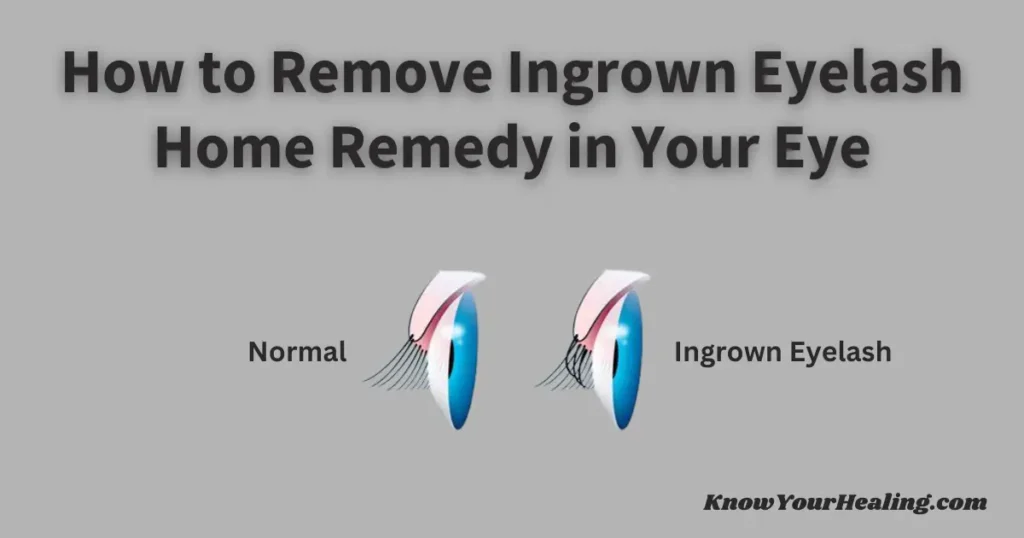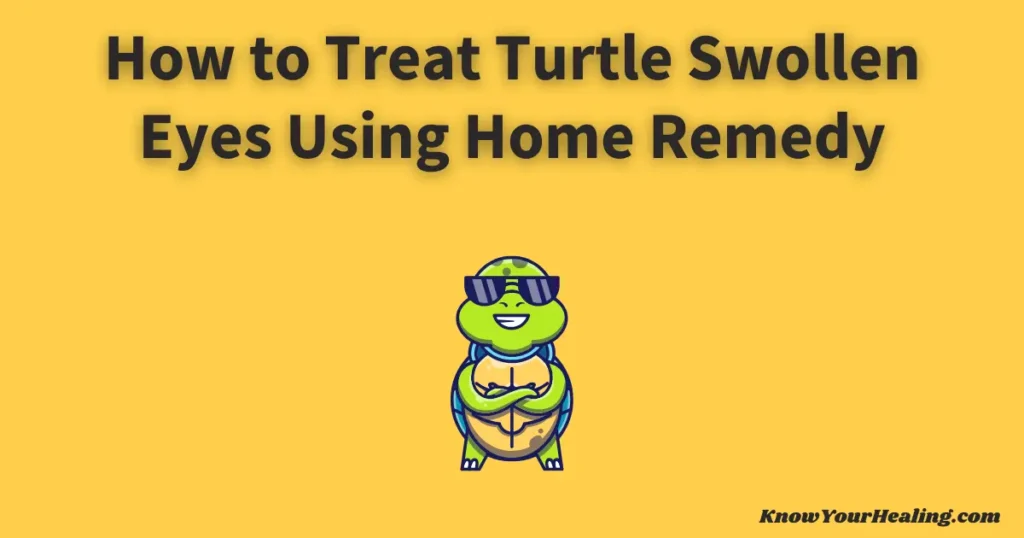Ingrown eyelash home remedy solutions relieve those experiencing discomfort from this common issue.
A warm compress can be an effective method, helping to soothe irritation and reduce swelling.
When dealing with ingrown eyelashes, exploring options that offer gentle care for the affected area is essential.
Another helpful tip is to use natural oils like coconut oil or aloe vera to soothe the eyelid area. These remedies can reduce irritation while maintaining skin hydration.
For those seeking additional solutions, gently plucking the misdirected eyelash might provide immediate relief.
It is crucial to approach this carefully to avoid further irritation or potential damage.
For ongoing issues, rinsing with saline solution could help remove debris and refresh the eye.
Combining these approaches creates a comprehensive strategy for addressing this uncomfortable condition.
Understanding Ingrown Eyelashes
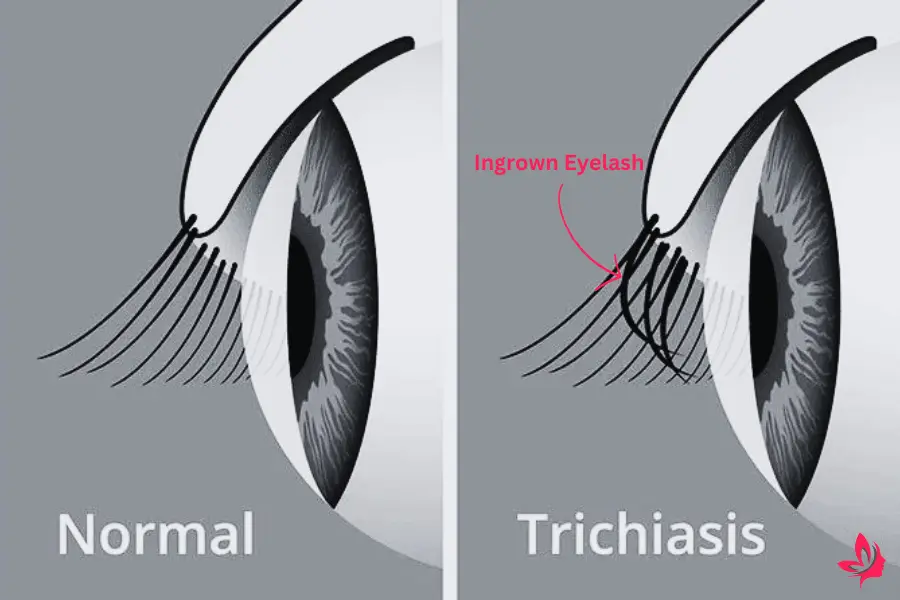
Ingrown eyelashes (trichiasis) occur when lashes grow in the wrong direction, leading to discomfort and potential eye issues.
This condition can affect the upper and lower eyelids and require various treatment options depending on severity.
Addressing these issues promptly can prevent complications such as eye infections or vision problems.
What Are Ingrown Eyelashes?
Ingrown eyelashes, medically known as trichiasis, arise when eyelashes grow inward toward the eye.
This abnormal growth can irritate the eye’s surface and sometimes lead to eye irritation or corneal abrasion.
The lashes grow from the follicle under the eyelid, potentially scraping against the sensitive eye area.
In extreme cases, ingrown lashes require a healthcare provider’s intervention to determine the best way to remove them and reduce discomfort.
Symptoms of Ingrown Eyelashes
Ingrown eyelashes often accompany red and watery eyes, the sensation of having something in the eye, and potential blurry vision.
In severe cases, the constant rubbing of abnormal lashes can cause corneal scratches or even a bacterial infection.
Eye care specialists should examine persistent symptoms such as severe pain or inflammation of the eyelid margin.
Infected or inflamed eyes may also require specific eye drops or warm compresses made with warm water.
Causes of Ingrown Eyelashes
The causes of ingrown eyelashes can vary widely.
Common reasons include eyelid inflammation, chronic blepharitis, or even eyelash mites.
Autoimmune disorders and eye conditions like herpes zoster eye disease might also lead to abnormal eyelash growth.
In some instances, an extra row of eyelashes develops, irritating.
Frequent use of eye makeup or eyelash extensions can also contribute.
Determining the underlying cause aids in choosing a proper treatment plan and helps prevent the reoccurrence of this eyelash problem.
Home Remedies for Ingrown Eyelashes
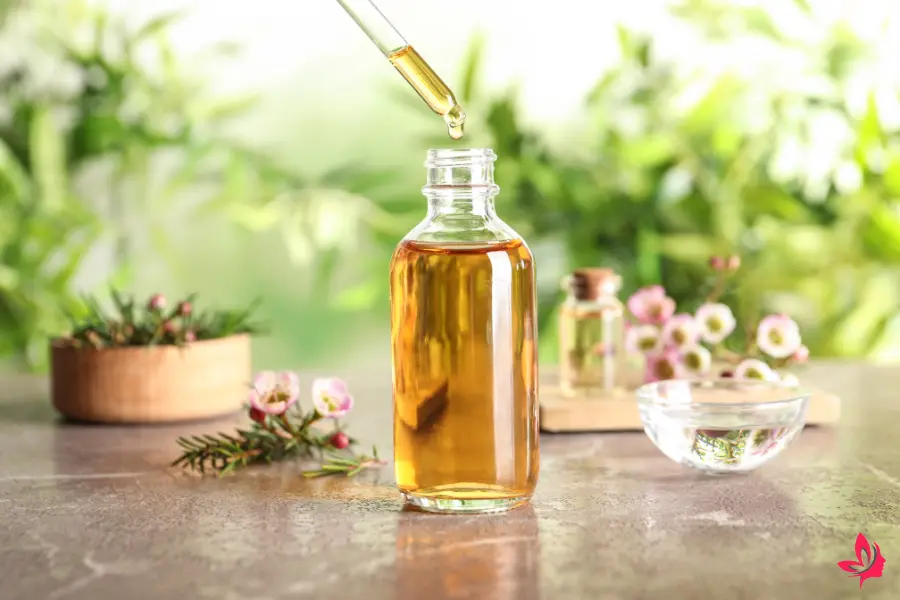
Ingrown eyelashes, also known as trichiasis, can cause discomfort as they grow in the wrong direction, causing irritation and redness. The following home remedies might help alleviate symptoms like pain and eye irritation.
Warm Compresses as an Ingrown Eyelash Home Remedy
Using warm compresses can soothe the affected area.
This remedy involves soaking a clean cloth in warm water and placing it over the eye for several minutes.
The warmth helps reduce eyelid inflammation by improving blood circulation and can soften lash follicles.
Consistent use of warm compresses may also help release ingrown lashes trapped under the skin.
Natural Oils to Soothe Ingrown Eyelashes
Certain natural oils like tea tree oil and castor oil have soothing properties that might help with ingrown eyelashes.
Applying a small amount of diluted oil to the eyelid margin can reduce inflammation and support eye health.
Ensuring the oils are diluted correctly is vital to avoid eye irritation.
Regular application can help manage discomfort and be a preventative measure for future ingrown lashes.
Herbal Treatments for Eye Irritation
Herbal treatments such as chamomile or green tea bags can be effective.
With their anti-inflammatory properties, these herbal remedies can help calm the eye area when used as a compress.
Placing a cooled tea bag on the affected eye may help reduce swelling and irritation.
These herbal options might offer gentle relief for those experiencing eye irritation from ingrown eyelashes.
Preventing Ingrown Eyelashes
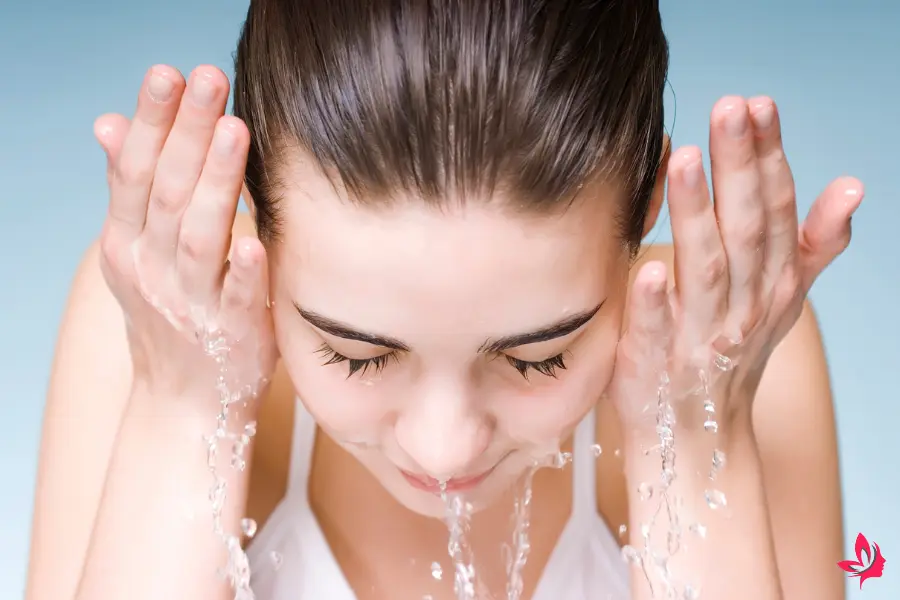
Preventing ingrown eyelashes involves careful attention to eyelash care and reducing eye irritation. Identifying when to seek professional help is also important.
Proper Eyelash Care Techniques
Proper eyelash care is crucial in preventing ingrown eyelashes.
Keeping the eye area clean can minimize the risk of ingrown lashes.
Washing the eyelids with mild soap or baby shampoo is essential. This helps remove dirt and oil that might block lash follicles.
Avoid using mascara or eyelash extensions excessively, as these can irritate the lashes.
When removing eye makeup, be gentle to prevent damaging hair follicles and causing lashes to grow in the wrong direction.
Regularly check for signs of abnormal eyelash growth.
Tips for Avoiding Eye Irritation
To avoid eye irritation, which can lead to ingrown eyelashes, gently clean the affected area with a clean cloth moistened with warm water.
Applying warm compresses can soothe the eyelids and promote proper lash growth.
Wearing sunglasses outdoors shields the eyes from dust and particles that can irritate the eyes.
Avoid using eye products that contain harsh chemicals or allergens.
Staying hydrated and practicing good eye hygiene also support overall eye health and reduce the likelihood of issues like chronic blepharitis.
When to Seek Professional Help
There are times when ingrown eyelashes require medical attention. Severe cases often involve severe pain, blurry vision, or if eyelashes begin causing corneal abrasion.
Seeking help from a healthcare provider can lead to an accurate diagnosis.
Professional treatment options, such as ablation surgery or, in extreme cases, laser hair removal, can provide a more permanent solution.
If symptoms persist or worsen, consulting a healthcare provider ensures proper treatment and prevents further complications, such as vision loss or eye infections.
DIY Treatments for Ingrown Eyelashes
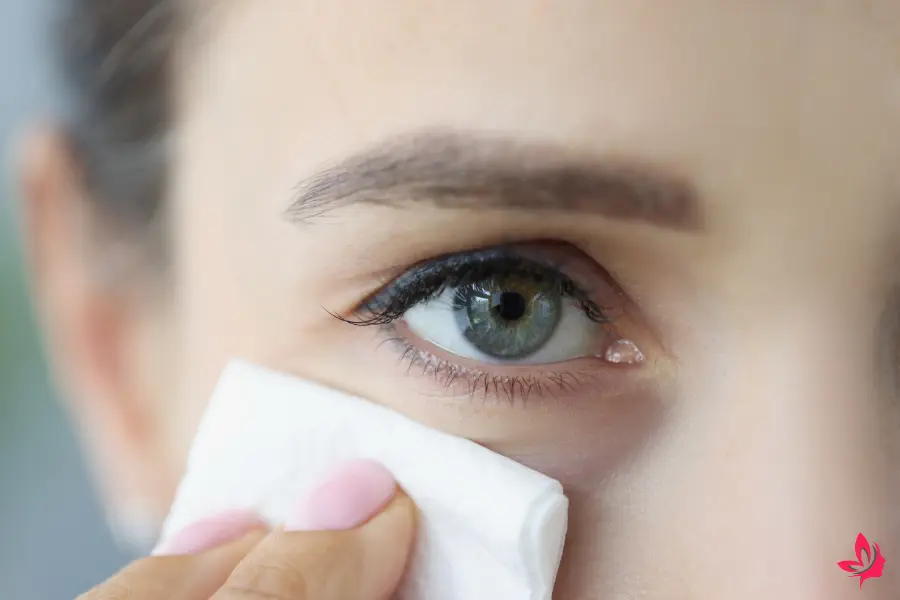
Ingrown eyelashes can cause eye irritation and discomfort. Simple at-home remedies like warm compresses and using natural oils can help relieve symptoms. Using these methods carefully can support eye health and reduce the risk of further complications.
Step-by-Step Guide to Using Warm Compresses
Warm compresses are a standard treatment for ingrown eyelashes, as they help reduce swelling and soften the skin.
To start, take a clean cloth and soak it in warm water. Ensure the temperature is comfortable to avoid burns.
Squeeze out the excess water and apply the compress to the affected eye for 10-15 minutes.
Repeat this process two to three times a day.
Warm compresses can help improve the condition of lash follicles by promoting circulation around the eyelid margin.
They are beneficial in loosening ingrown lashes, which can lessen irritation and inflammation of the eyelid.
This method is also helpful for related issues like chronic blepharitis and blocked oil glands.
How to Safely Apply Natural Oils
Natural oils like castor oil and tea tree oil may aid in soothing an ingrown eyelash.
Clean the eye area thoroughly before applying oil to avoid bacterial infection.
Use a cotton swab to gently dab a small amount of oil onto the lash line of the lower or upper eyelid.
Tea tree oil, known for its antibacterial properties, may help reduce inflammation.
Be cautious, as some oils may irritate if they enter the eye. If any adverse effects occur, discontinue use and consult a healthcare provider.
Natural oils can be part of treatment options, relieving eye conditions caused by wrong-direction lash growth.
Creating an Herbal Eye Wash
An herbal eyewash can provide relief and is simple to make at home.
Chamomile tea is a popular choice due to its anti-inflammatory properties.
Brew a chamomile tea bag in a cup of hot water. Allow it to cool to lukewarm.
Once cooled, use the tea to rinse the affected area gently.
This at-home remedy can help soothe symptoms like watery eyes and mild irritation.
While herbal washes are not a one-size-fits-all solution, incorporating them into a proper treatment plan may speed up healing and support eye care when dealing with an ingrown eyelash.
When to Consult a Doctor

Ingrown eyelashes can cause severe discomfort and lead to complications if left untreated. It’s important to know when to seek professional help, identify worrisome symptoms, understand treatment options, and be aware of potential complications.
Signs That Require Medical Attention
Experiencing severe pain, persistent eye irritation or a painful bump on the eyelid suggests the need for medical attention.
If there is redness, swelling, or signs of a bacterial infection, such as discharge or a fever, an eye doctor should be consulted.
Vision problems such as blurry vision or sudden changes in sight are also red flags.
If an ingrown eyelash leads to a corneal abrasion, it can risk eye infections.
Chronic issues, including an unexpected complication in the eye area, call for a specialist’s input.
Professional Treatments for Ingrown Eyelashes
An eye doctor may suggest treatments to relieve discomfort, such as ablation surgery, laser treatment, or plucking the lash.
Techniques like argon laser or radio waves can prevent ingrown hairs from growing back.
In severe cases, surgery on the upper eyelid may be considered to modify lash follicles and address underlying causes.
Options like eyelid surgery or other professional measures provide more permanent solutions.
Healthcare providers often offer eye drops to reduce inflammation and promote healing.
Potential Complications of Untreated Ingrown Eyelashes
Failing to treat ingrown eyelashes can lead to further complications, including chronic blepharitis, eye infections, and potential vision loss from continuous irritation.
If the eyelash consistently grows in the wrong direction, inflammation of the eyelid or damage to the cornea might occur.
If symptoms persist over time, it could indicate underlying eye conditions.
Neglecting treatment can cause lasting harm to the eye, making it vital to address abnormal symptoms promptly.
Final Thoughts
Ingrown eyelash home remedies can offer relief and are simple to try. When eyelashes grow inward, it can cause discomfort and irritation. Practicing careful techniques at home may help alleviate these symptoms.
Before trying any home remedy, cleaning the area to avoid infections is important.
Use a warm compress to soften the skin and lashes. This method can help remove the ingrown eyelash more easily.
Key Takeaways:
- Start with Cleanliness: Always ensure the area is clean before attempting any procedure.
- Warm Compresses: A warm compress can ease discomfort and make lashes more accessible.
- Professional Help: If home remedies do not work, consult a professional to avoid further complications.
Frequently Asked Questions
Common ingrown eyelash concerns include safe removal methods, differentiating eye conditions, and dealing with discomfort. Understanding these issues can help in effective management.
How do you get rid of an ingrown eyelash?
A common method for removing an ingrown eyelash is gently plucking the misaligned lash with sterilized tweezers. Ensure you have clean hands and tools to avoid infection.
How do you unclog eyelash follicles?
A warm compress can be applied to the eyelid to help unclog eyelash follicles and reduce swelling. This process softens the area and promotes drainage.
What to do when an eyelash is poking your eye?
Gently blink while pulling the upper lid over the lower one. This may help shift the eyelash so it doesn’t continue irritating the eye.
How to tell the difference between a stye and an ingrown eyelash?
A style typically appears as a red, swollen bump that may be painful, while an ingrown eyelash usually causes irritation but less visible swelling. Consulting with a healthcare provider can clarify the condition.
How do I get rid of a bump on my eyelash line?
A warm compress for several minutes can reduce swelling and help the bump heal. Consistent use twice a day is often effective.
Do ingrown hairs go away?
Ingrown hairs may resolve on their own, but taking steps like using warm compresses can accelerate the healing process.
How do you get rid of an infected eyelash follicle?
Cleaning the area with mild soap and water or applying a warm compress can help alleviate infection symptoms. An antibiotic ointment prescribed by a doctor may be necessary.
How do I stop my eyelashes from curling inwards?
Trim any excessively long lashes that may be curling inward. Ensure proper eyelid hygiene to prevent further ingrowth.
Should you pull out the infected eyelash?
It is generally advisable not to pull out an infected eyelash, as this can worsen the infection. Instead, consult a doctor for personalized advice.
Why is my lash line swollen?
Swelling along the lash line may indicate an infection, allergy, or irritation. You can reduce swelling by keeping the area clean and using cool compresses.

